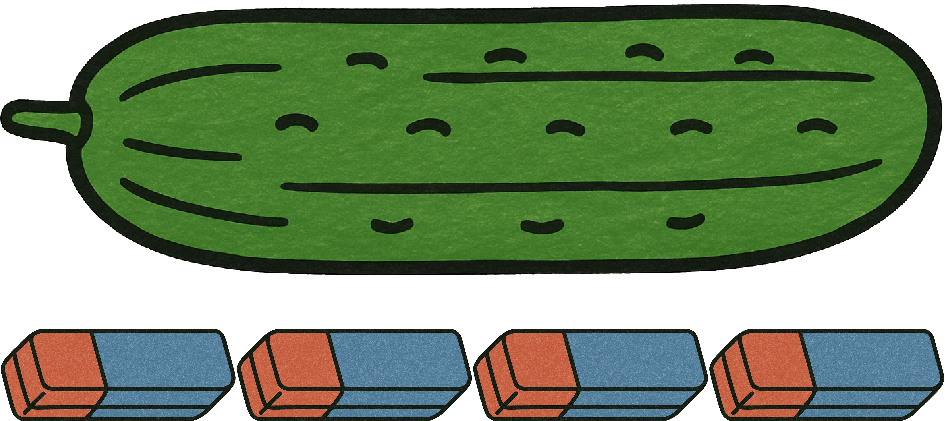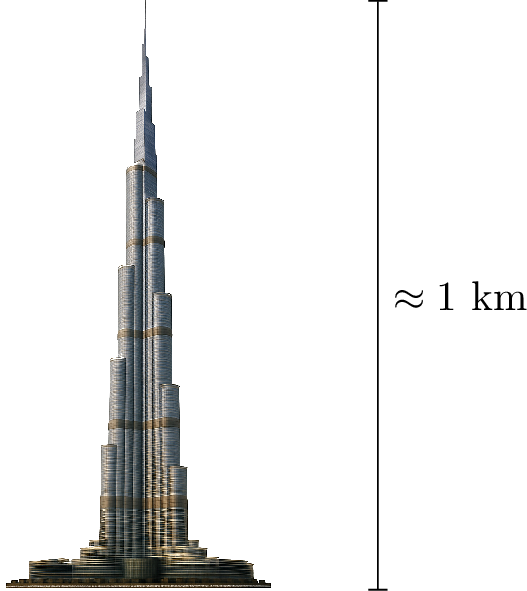Length
Definition
Definition Length
Length is the distance from one point to another.
Method Measure Length with Objects
To measure the length of an object, use small things like blocks or erasers. Line them up next to the object and count how many fit along its length.
Example

The cucumber measures 4 erasers long.
Length Units
We can measure length using different units like blocks or erasers. But these units are not the same for everyone. Your friend might have a longer eraser than yours, making it hard to compare. To solve this, mathematicians created a universal unit called the meter, so everyone can measure and compare lengths the same way.
Definition Units of Length
- Millimeter \(\left(\mathrm{mm}\right)\): A very small unit of length, about the thickness of a coin.

- Centimeter \(\left(\mathrm{cm}\right)\): A small unit of length, about the width of your finger.

- Meter \(\left(\mathrm{m}\right)\): A longer unit of length, about the height of a 6-year-old girl.

- Kilometer \(\left(\mathrm{km}\right)\): A very long unit of length, about the height of the Burj Khalifa in Dubai, United Arab Emirates.

Conversion of Length Units
Definition Conversion of Length Units
- \(1\text{ km}=1000\text{ m}\)
- \(1\text{ m}=100\text{ cm}\)
- \(1\text{ cm}=10\text{ mm}\)
Method Converting using a Multiplication or a Division
- Use multiplication to go from a bigger unit to a smaller one (like meters to centimeters).
- Use division to go from a smaller unit to a bigger one (like centimeters to meters).

Method Converting Using a Table
To convert between units of length, we can use a conversion table. For example, to convert 4 meters to centimeters:
- Write the units in the table: km, m, cm, mm.
\(\mathrm{km}\) \(\quad\;\) \(\quad\;\) \(\;\mathrm{m}\) \(\quad\;\) \(\mathrm{cm}\) \(\mathrm{mm}\) - Place the number in the column of the unit you start with.
\(\mathrm{km}\) \(\quad\;\) \(\quad\;\) \(\;\mathrm{m}\) \(\quad\;\) \(\mathrm{cm}\) \(\mathrm{mm}\) 4 - Fill in zeros in the columns to the right until you reach the unit you want to convert to.
\(\mathrm{km}\) \(\quad\;\) \(\quad\;\) \(\;\mathrm{m}\) \(\quad\;\) \(\mathrm{cm}\) \(\mathrm{mm}\) 4 0 0 - Read the number as a whole to get the converted value.
So, 4 m = 400 cm.